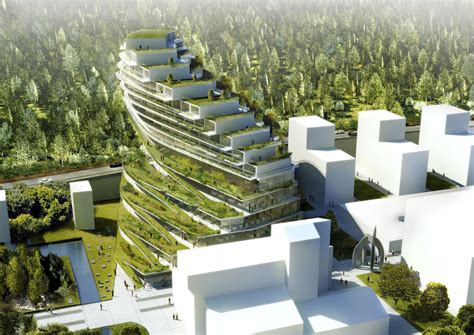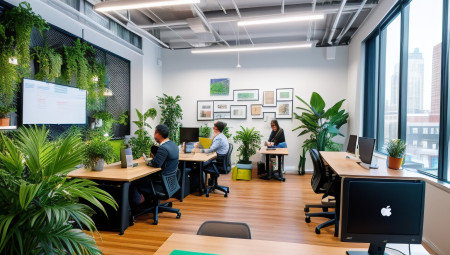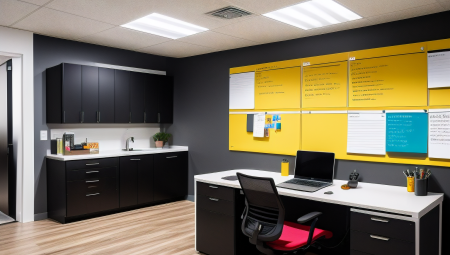In a world where environmental awareness is on the rise, the role of green architects in shaping a sustainable future has never been more crucial. Sustainable architecture is not just a trend, it is a mindset, a way of designing and constructing buildings that minimize their impact on the environment and promote a healthier and more sustainable way of living. In this blog post, we will delve into the world of green architects and their pivotal role in creating a built environment that embraces environmental considerations. From understanding the principles of sustainable architecture to incorporating renewable energy systems and sustainable materials, we will explore the various aspects that make up the journey into sustainable architecture. Join us as we uncover how green architects are not just designing buildings, but also acting as agents of change in the quest for a greener and more sustainable future.
Table of Contents
Understanding Sustainable Architecture
Sustainable architecture is an approach to building that seeks to minimize the negative environmental impact of buildings by efficiency and moderation in the use of materials, energy, and development space. It is a concept that takes into account the environmental, economic, and social impact of designing and constructing buildings.
One of the key principles of sustainable architecture is to reduce the overall impact on human health and the natural environment by: efficiently using energy, water, and other resources; protecting occupant health and improving employee productivity; and reducing waste, pollution, and environmental degradation.
In addition to these principles, sustainable architecture also incorporates concern for our natural surroundings. The design of buildings aims to harmonize with the local climate, traditions, and the immediate environment in which they are built. The goal is to create buildings that are not only environmentally responsible but also aesthetically pleasing and function in harmony with their surroundings.
Understanding sustainable architecture is crucial in today’s world as it can help in mitigating the impact of climate change, reducing the strain on natural resources, and creating healthier and more livable environments for communities around the world.
The Role of Green Architects
Green architects play a crucial role in addressing environmental issues and promoting sustainability in the built environment. Their primary focus is to design buildings and structures that are energy-efficient, environmentally responsible, and in harmony with nature.
By incorporating renewable energy systems and utilizing sustainable materials and construction methods, green architects help reduce the environmental impact of buildings and minimize the use of non-renewable resources.
Furthermore, green architects prioritize indoor air quality and promote the health and well-being of building occupants by creating spaces that enhance human comfort and productivity.
Overall, the role of green architects extends beyond just designing aesthetically pleasing buildings; it encompasses a commitment to creating a more sustainable and resilient built environment for present and future generations.
Designing with Environmental Considerations
When it comes to designing with environmental considerations, architects and designers have a responsibility to prioritize sustainability in their projects. This means taking into account the impact that a building will have on the environment, both during its construction and throughout its lifespan. It also involves considering how the building will interact with the local ecosystem and climate, as well as the potential for renewable energy generation and water conservation.
One way that architects can incorporate environmental considerations into their designs is by utilizing passive design strategies, such as orienting the building to take advantage of natural light and ventilation. This not only reduces the need for artificial lighting and air conditioning, but also decreases the building’s overall energy consumption.
In addition to passive design, architects can also incorporate renewable energy systems into their projects, such as solar panels and wind turbines. By generating clean energy on-site, buildings can reduce their reliance on non-renewable resources and minimize their carbon footprint.
Furthermore, using sustainable materials and construction methods can have a significant impact on the environmental footprint of a building. By choosing materials that are responsibly sourced and have a minimal environmental impact, architects can help reduce the depletion of natural resources and minimize the production of waste.
Incorporating Renewable Energy Systems
When it comes to modern architecture, the incorporation of renewable energy systems is becoming increasingly important. Architects and designers are now focusing on sustainable and eco-friendly solutions to meet the energy needs of buildings. By integrating renewable energy sources such as solar panels, wind turbines, and geothermal heating systems, buildings can significantly reduce their dependence on non-renewable energy.
One of the key benefits of incorporating renewable energy systems into buildings is the reduction of carbon emissions and environmental impact. By tapping into natural resources such as sunlight and wind, architects can create structures that are not only energy-efficient but also contribute to a healthier planet. This approach aligns with the principles of sustainable architecture, which aims to minimize the ecological footprint of buildings and promote environmental stewardship.
Another advantage of incorporating renewable energy systems is the long-term cost savings for building owners. While the initial investment in renewable energy infrastructure may be higher, the ongoing operational expenses are significantly lower. With rising energy costs and increasing awareness of climate change, many property owners are recognizing the value of incorporating renewable energy systems as a smart financial decision.
In conclusion, the incorporation of renewable energy systems represents a progressive shift in modern architecture towards a more sustainable and eco-conscious approach. With the potential to reduce environmental impact, cut energy costs, and promote long-term sustainability, it is clear that renewable energy systems have a vital role to play in the future of architectural design.
Maximizing Energy Efficiency in Buildings
When it comes to constructing buildings, maximizing energy efficiency is an essential consideration. The energy consumption of buildings has a significant impact on the environment, and by implementing energy-efficient designs and technologies, we can reduce our carbon footprint and contribute to a more sustainable future.
One way to maximize energy efficiency in buildings is by using passive design strategies, such as orienting the building to take advantage of natural light and ventilation, and using high-performance insulation to minimize heat loss and gain. These strategies can significantly reduce the need for artificial lighting, heating, and cooling, resulting in lower energy demands.
Energy-efficient technologies such as LED lighting, smart thermostats, and energy-efficient appliances can also play a vital role in reducing energy consumption in buildings. By using these technologies, building owners can not only save on energy costs but also contribute to a more sustainable and eco-friendly built environment.
In addition to design and technologies, building management and occupant behavior also have a significant impact on energy efficiency. Implementing energy management systems, conducting regular energy audits, and educating occupants about energy-saving practices can all contribute to reducing energy consumption and promoting a more sustainable approach to building operations.
Utilizing Sustainable Materials and Construction Methods
Utilizing sustainable materials and construction methods is crucial in creating environmentally-friendly and efficient buildings. By using materials that have minimal impact on the environment and incorporating construction techniques that minimize waste and energy use, architects and builders can help reduce the carbon footprint of buildings and contribute to a more sustainable future.
One of the key aspects of utilizing sustainable materials is to prioritize the use of renewable resources such as timber from responsibly managed forests, bamboo, and recycled materials. These materials have a lower environmental impact compared to traditional building materials and can help conserve natural resources.
In addition to materials, construction methods play a significant role in the overall sustainability of a building. Strategies such as prefabrication, which reduces construction waste, and passive design principles, which optimize energy efficiency, are essential in creating buildings that are not only environmentally friendly but also cost-effective in the long run.
By integrating sustainable materials and construction methods into building projects, architects and builders can play a crucial role in promoting environmental conservation and creating a more sustainable built environment for future generations.
Creating Buildings that Blend with Nature
When it comes to sustainable architecture, one important aspect to consider is creating buildings that seamlessly blend with the natural environment. This involves incorporating design elements and construction methods that minimize the impact on the surrounding ecosystem.
By utilizing sustainable materials and construction methods, architects and builders can create structures that harmonize with their surroundings, rather than imposing on them. This may involve using locally-sourced materials, such as stone or wood, that are in keeping with the aesthetic and cultural context of the area.
In addition to materials, maximizing energy efficiency in buildings is crucial to ensuring that they blend with nature. This may include passive design strategies, such as orienting the building to take advantage of natural light and ventilation, as well as implementing green roofs or living walls to provide insulation and reduce heat gain.
Furthermore, creating buildings that blend with nature involves considering the landscaping and outdoor spaces around the structure. Designing with environmental considerations means integrating the building into the natural topography, preserving existing vegetation, and creating habitat for wildlife.
Promoting Indoor Air Quality and Health
Indoor air quality is a crucial aspect of building design that directly impacts the health and well-being of occupants. Green architects play a vital role in promoting indoor air quality and health by integrating sustainable design principles into their projects. By prioritizing ventilation systems and air filtration, architects can ensure that the air inside buildings is free from pollutants and harmful particles.
Additionally, incorporating natural ventilation strategies such as operable windows and skylights can further enhance indoor air quality by allowing for the flow of fresh air. Green architects also focus on selecting low-emission materials for construction to minimize the release of toxic substances into the indoor environment.
Furthermore, promoting the use of indoor plants can greatly contribute to improving air quality as plants can naturally purify the air by removing contaminants. Architects can incorporate biophilic design elements that integrate natural elements, including plants, into the indoor environment to create a healthier and more uplifting space.
By taking these measures to promote indoor air quality and health, green architects demonstrate their commitment to creating sustainable and health-conscious buildings that prioritize the well-being of occupants.
Implementing Water Conservation Strategies
When it comes to sustainable architecture, water conservation is a key consideration. With the increasing demand for clean water and the negative impact of climate change on water sources, it is more important than ever to implement strategies that reduce water consumption in buildings and communities.
One effective way to achieve this is through the use of low-flow fixtures and appliances. By installing devices such as low-flow toilets, faucets, and showerheads, buildings can significantly reduce their water usage without sacrificing performance.
Another important strategy is rainwater harvesting. By collecting and storing rainwater for non-potable uses such as irrigation and toilet flushing, buildings can decrease their reliance on municipal water sources, ultimately reducing demand and pressure on freshwater reserves.
Additionally, native landscaping can play a significant role in water conservation. By choosing plants that are adapted to the local climate and require minimal watering, landscaping can be designed to thrive without the need for excessive irrigation.
Green Architects as Agents of Change
Green architects play a crucial role in shaping the future of our built environment. By incorporating sustainable design principles and eco-friendly technologies into their projects, they are acting as agents of change in the fight against climate change and environmental degradation. Their innovative approach to architecture not only minimizes the negative impact on the planet but also promotes a more sustainable way of living for future generations.
One of the key responsibilities of green architects as agents of change is to educate and inspire others in the industry to embrace environmentally-conscious practices. By leading by example, they can influence the wider architectural community to prioritize sustainability and consider the long-term impact of their designs on the planet. Through advocacy and collaboration, they can drive positive change within the industry and encourage a shift towards more sustainable and green building practices.
In addition to their influence within the architectural community, green architects as agents of change also have the power to impact public perception and policy. By designing high-profile, sustainable buildings that demonstrate the feasibility and benefits of eco-friendly design, they can inspire both clients and the general public to demand more sustainable construction practices. Furthermore, their expertise can inform and shape government policies and regulations related to building and environmental standards, driving systemic change at a broader level.
In conclusion, green architects are undeniably agents of change in the quest for a more sustainable built environment. Through their innovative designs, advocacy efforts, and influence on public perception and policy, they are driving the transition towards a greener, more sustainable future for architecture and the planet as a whole.





